Between Phase 1 and 2
Summer of 2012
Due to unforeseen delays in the NYS bidding process required for Phase 2, the RFP for grassland work was not awarded in time for the 2012 growing season.
As a result of this delay the winter rye planted in the fall of 2011 was not mowed as planned in the spring of 2012. The winter annual rye continued to grow reaching a height of 4 to 5 feet and eventually seeding.
Fields After Final Discing
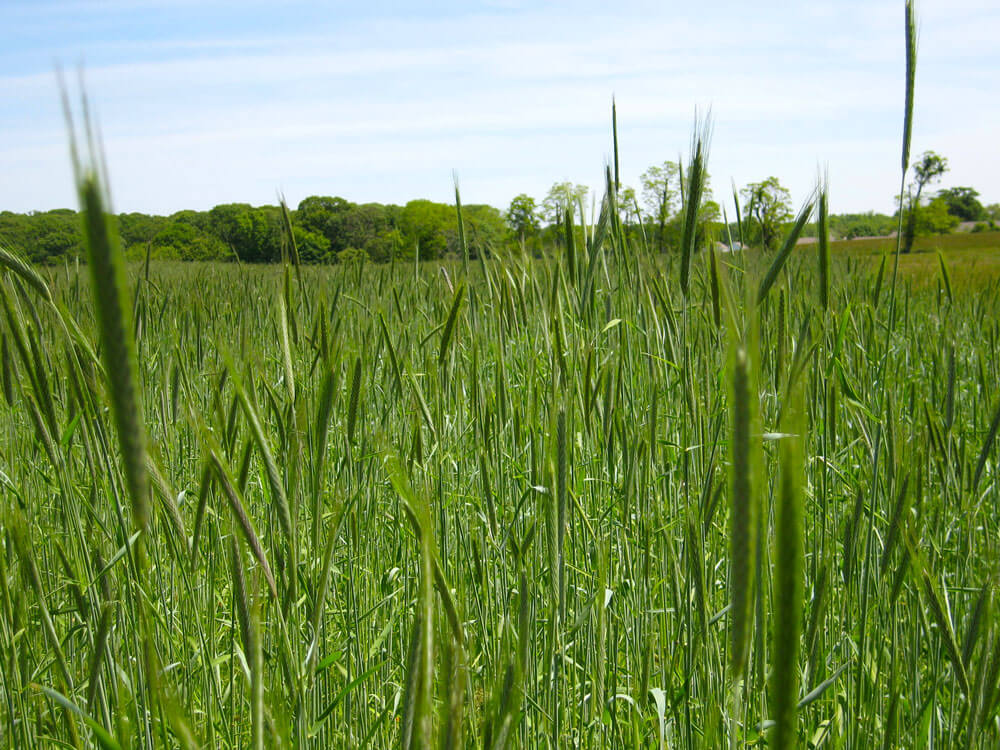
Close up view of rye in the late spring of 2012.

Volunteer taking field notes. Surrounding vegetation is the annual rye grass.

Looking in a westerly direction one can see the taller bluish green annual rye toward the back of the photo.
As the summer progressed some persistent invasives such as Mile-A-Minute emerged. One infestation was located at the former invasive hedge row which continued to be problematic after the native seeding in 2015. See Phase 3 for more information on this problem and how it was managed. Another problem area was on the northern border of the field.
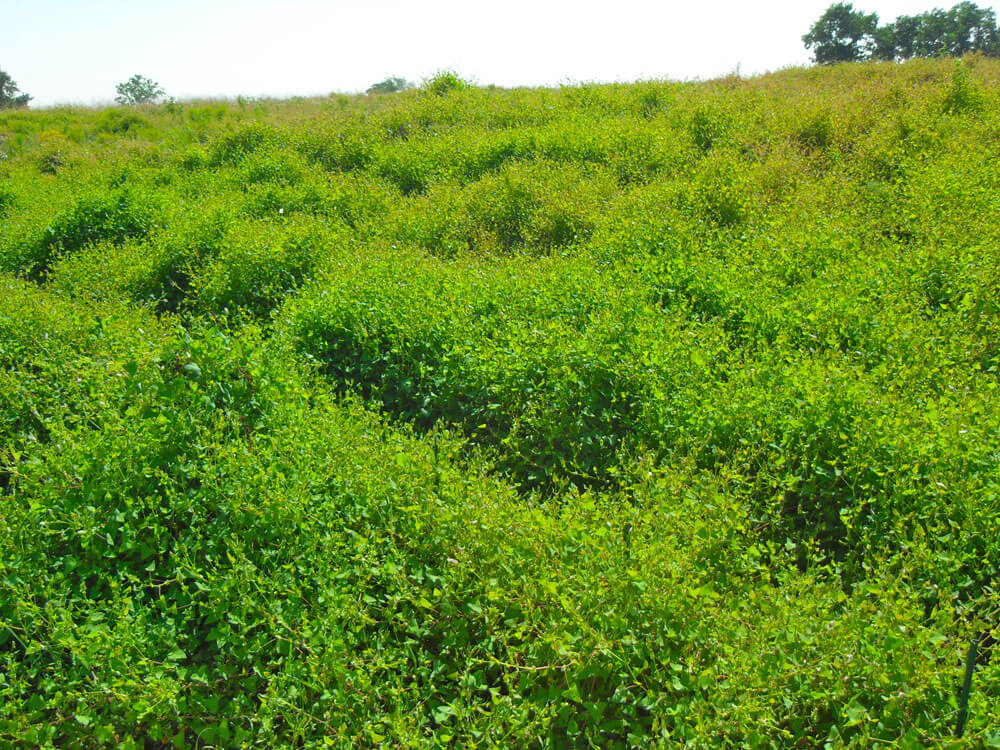
Mile-A-Minute on northern edge of field in summer 2012.
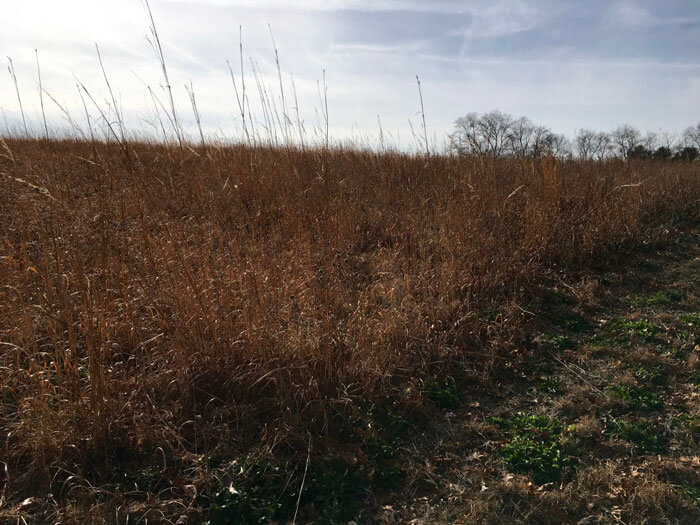
After subsequent mowing and disking in 2013 and 2014, the Mile-a- Minute in this same area was greatly reduced. Photo taken 2016
During the 2012 summer, wildflowers both invasive and native bloomed through out the 30 acres benefiting the Baltimore Checkerspot population. English Plantain (Plantago lanceolata) a host plant of the Baltimore Checkerspot was one of the plants that could be found within the field.

Looking west at a mix of wildflowers and grasses.
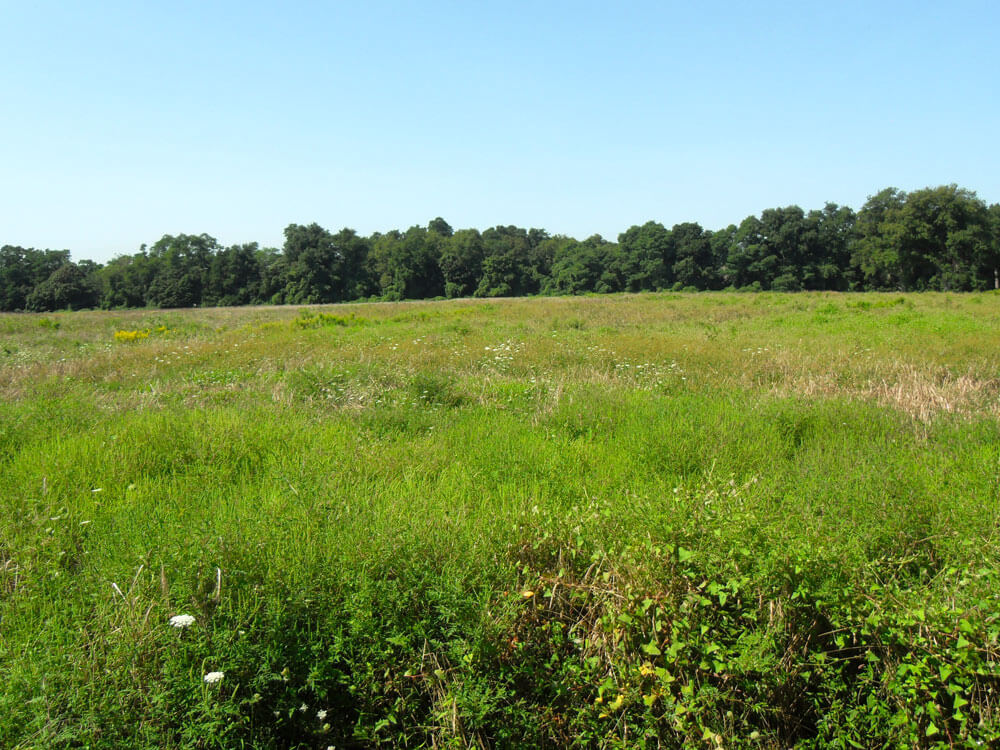
Looking west from the northeast corner of the field.
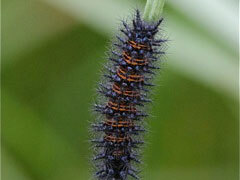
Baltimore Checkerspot Butterfly larvae on English Plantain stem. The larvae can begin emerging in late April.
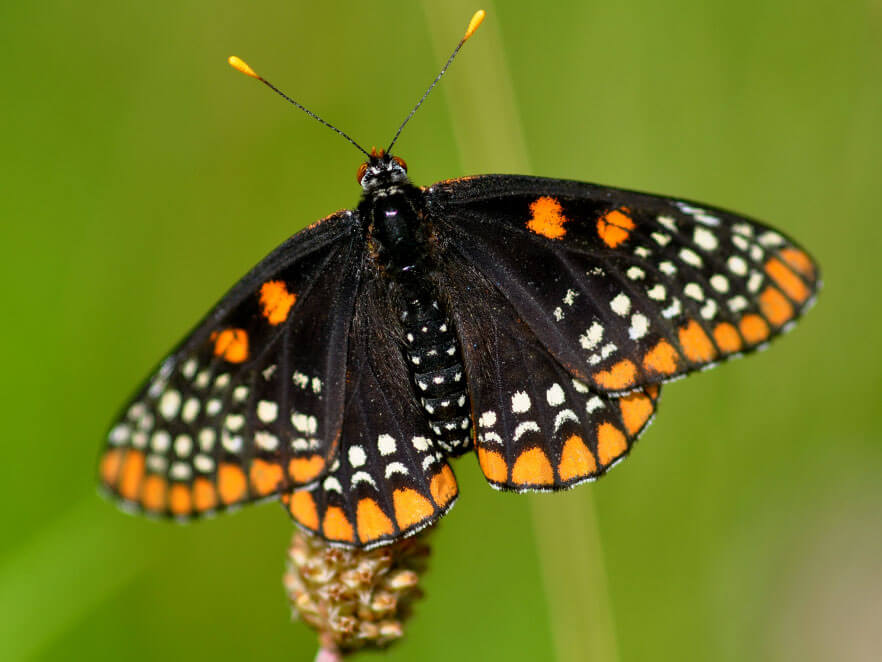
Baltimore Checkerspot Adult Butterfly on English Plantain. Based on records beginning 2009 the adult flight period at Caumsett begins in early June and peaks around the 16 to 18 of that month. A few adults may still be present the first few days of July.
Grassland Restoration Project Phases
- Project Overview
- Phase 1 - September through November 2011
- Phase "1.5" - Summer 2012
- Phase 2 - December 2012 through September 2013
- Phase 3 - March 2014 through Spring 2015
- Second Year of Establishment 2016
- Third Year of Establishment 2017
- Fourth Year of Establishment 2018
- Aerial Photos of Field
- Grassland Management Plan
